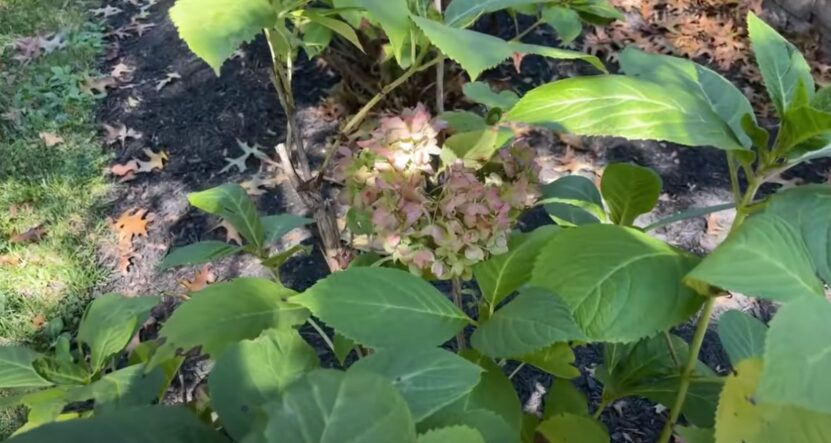The Ultimate Guide To Hydrangea Leaves Turning Yellow
Wiki Article
Hydrangea Leaves Turning Yellow Fundamentals Explained
Table of ContentsSome Known Details About Hydrangea Leaves Turning Yellow The Single Strategy To Use For Hydrangea Leaves Turning YellowHydrangea Leaves Turning Yellow Fundamentals ExplainedA Biased View of Hydrangea Leaves Turning YellowNot known Details About Hydrangea Leaves Turning Yellow
Large fallen leaves frequently look saggy during the afternoon warm. When they fail to perk up in the evening or still look wilted in the early morning, your plant can be overwatered.Remove the plant from the dirt and prune out any roots that aren't white and swollen (plump). Replant in a brand-new place or work some sand right into the dirt for better drain. Underwatering also creates delegates transform yellow with brownish, crispy edges. Don't try to correct the issue by watering excessively.
Photosynthesis, as most of us know, is vital for plant survival, so chlorosis needs to be dealt with quickly. While chlorosis can be triggered by various other nutrient deficiencies, it is most frequently an iron shortage. In the adhering to area you will certainly learn exactly how to identify whether your plant has an iron shortage or something else.
Initially shows up on the older leaves, but the fallen leave blood vessels stay eco-friendly. While there is typically adequate iron in all-natural soil, hydrangeas typically struggle to soak up enough of it.
Getting The Hydrangea Leaves Turning Yellow To Work
The ideal means to avoid iron deficiency-chlorosis in hydrangeas is to plant them in suitable ericaceous or acidic dirt. When planting in a bed, mix in some peat or reduced-peat ericaceous garden compost and examine the p, H worth yearly. This is required due to the fact that the compost combination around the plants will affect the p, H worth of the dirt in the future and the p, H worth may climb once again.
It is only utilized on a commercial range, where a prolonged iron deficiency would certainly suggest considerable return losses. The special fertilizers for this are usually costly and need to be used in extremely precise doses to avoid damage to the fallen leaves. Foliar fertilisation is only reliable for a brief duration and should be used frequently or supplemented by typical iron fertilisation.
September is the most effective season to do something regarding those hydrangeas. Their fallen leaves are transforming yellow, the flowers have discolored, and their gangly appearance is making you crazy. Beginning with the existing blossoms, currently is the time to cut them for dried out setups. If you cut the large flowers earlier in the period, they will certainly shrivel.
Now to encounter the remaining shrub, not a rather view as winter strategies. Mophead, Lacecap and Oakleaf hydrangeas flower on old wood. What that indicates is they will grow next year on wood that was created this year. Do not prune Mophead, Lacecaps and Oakleaf hydrangeas to the ground, as you will certainly get rid of the stems that prepare to flower following springtime.
Everything about Hydrangea Leaves Turning Yellow
That means you won't be eliminating also several of important source next year's flower buds. If the bush is getting bigger than you like, you can take out a third of the online timber while you're in there.We're ideal in the middle of our late-blooming hydrangea period right here, so I thought I would certainly share a suggestion for this specific kind of hydrangea that I located truly fascinating. A great deal of people have a comparable issue with their panicle hydrangeas where they begin to see the leaves transforming yellow and dropping off at various parts of the period and it can be pretty significant and rather concerning due to the fact that it can occur really swiftly on a hedge that feels like it's otherwise truly healthy and balanced.

Where we stay in zone 6, they're quite very easy to have success with and they're really preferred in our area, which is terrific because that indicates that there are try this web-site hydrangeas almost everywhere currently of year. When you see your hydrangea leaves starting to turn yellow, you could believe that your plant is dying or being maltreated somehow, but in reality, the opposite is real.
See This Report about Hydrangea Leaves Turning Yellow
If you truly desire to make best use of flowers, a (the middle number) will truly assist increase the number and size of your blossoms. You ought to see the variety of newly-yellowed fallen leaves lower rather swiftly as quickly as you offer your hydrangea the food it requires. Hydrangea Leaves Turning Yellow. The excellent news is that if you do absolutely nothing, the plant will still be fine, it will just have a few less fallen leavesCourtenay is the writer of guide The Cleaning Ninja and has actually been included in countless publications consisting of Nation Sampler Farmhouse Style, Better Residences and Gardens, Parents Publication, Real Simple, and Our Residences.
Waterlogged soil deprives the origins of oxygen, resulting in root rot and yellow leaves. On the other hand, underwatering or dehydration causes the plant to shrivel and its foliage to yellow. Keeping a regular watering timetable and making certain appropriate water drainage through drain holes or layers can help prevent these concerns.
With appropriate care and upkeep, hydrangeas can grow and preserve their brilliant, colorful fallen leaves. Hydrangea leaves transforming yellow is a typical issue that can be connected to various factors.
Getting The Hydrangea Leaves Turning Yellow To Work

Report this wiki page